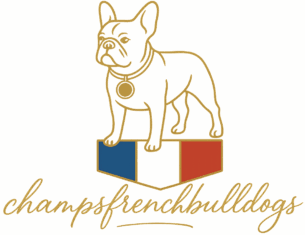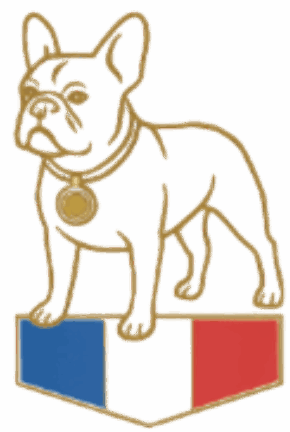French Bulldog Breed History America’s #1 Dog
The French Bulldog’s history is a small-dog story that begins in an unlikely place: the English Midlands. In the mid-1800s, lace-making towns around Nottingham were full of craftspeople who kept little “toy” bulldogs as warm lap companions during long hours at the frame. When industry shifted and work dried up, many lace workers left England for northern France. They took their tiny bulldogs with them. On French soil, those compact dogs caught the eye of local fanciers and city dwellers, and over several decades a new type took shape—the Bouledogue Français (french bulldog)—smaller than the traditional bulldog, softer in expression, and far more at home in an apartment than a yard.

What happened in France wasn’t a single cross or a single moment.
It was a style shift. Paris loved character, and these little dogs had it in spades: tidy size, sturdy bodies, a comedian’s timing, and those ears—some folded, some standing, many somewhere in between. Artists, café owners, and shopkeepers adopted them as mascots. Posters and paintings from the Belle Époque era show a dog that felt at home on a studio stool or in a market stall, equally at ease with performers and society patrons. The “French Bulldog” became a city companion first and a show dog second, which explains a lot about the breed’s temperament today: people-oriented, adaptable, and unbothered by close quarters.
By the 1890s the little bulldog had sailed to America along with fashionable travelers. That’s where a defining moment arrived. Early on, some Frenchies still had the older “rose” ear (folded back like a classic bulldog), while others showed the now-iconic bat ear—upright, wide at the base, rounding slightly at the top. American fanciers fell in love with the bat ear and decided it was the breed’s signature. In 1897 they organized the French Bull Dog Club of America and, famously, refused to show under a standard that allowed both ear types. Exhibitors staged their own specialty at New York’s Waldorf-Astoria and displayed only bat-eared dogs. That bit of show-ring drama set the look we recognize today: a compact frame, square head, short muzzle, and proud, upright ears that read like punctuation marks.
Recognition
Recognition followed on both sides of the Atlantic, and for a while Frenchies were the darlings of city salons and smart drawing rooms. Then the world changed. Two world wars, economic shocks, and shifting tastes pushed many older breeds into the background. The French Bulldog never vanished, but numbers dipped and the breed spent decades as a connoisseur’s companion. What saved it was the same thing that built it: life in close quarters. As urban living grew again—smaller homes, busier schedules, more apartment dwellers—the Frenchie’s virtues came back into focus. A good Frenchie is compact but sturdy, deeply tuned to people, funny without being frantic, and perfectly happy with short, thoughtful outings rather than marathon runs.
Modern popularity surged as social media discovered what Paris knew a century ago: Frenchies photograph like little comedians. But behind the memes is a real dog with a real history. Those bat ears weren’t an accident; they were a choice. The easygoing, indoor-friendly nature wasn’t accidental either; it was shaped by generations of families who valued a companion that fit into workshops, studios, and townhouses. Even coat colors and markings reflect a long preference for clean, classic looks that suit a city dog—smooth coats that are easy to care for and expressions that seem to talk back.
History also explains responsibility. A breed built for indoor life and close human contact needs thoughtful care: measured meals to keep a visible waist, low-impact exercise, cool-hour walks in warm climates, and homes set up with non-slip runners and ramps. At Champs French Bulldogs here in Naples, Florida, we lean into that history. Our program is designed around the traits that made the Bouledogue Français beloved in the first place—sound, social, family-ready dogs with big personalities and steady routines. We keep body condition lean, we train for manners that make city and condo life easy, and we focus on enrichment that exercises the brain as much as the body. If you’d like to see how we structure basics like meals and movement, start with our pages on nutrition and training ([link → internal: Frenchie Raw Feeding Guide], [link → internal: Frenchie Academy]).
The timeline reads simple but took a century and a half to write: artisan England sends its tiniest bulldogs to France; Paris falls in love; America fixes the bat ear and writes a standard; the modern family rediscovers the perfect apartment companion. Through all of it, one constant remains: the French Bulldog was bred to live close to people. That’s why they follow you from room to room. That’s why they’re expert couch comedians. That’s why a well-bred Frenchie feels like a friend you’ve known forever.

If this history sounds like the beginning of your story, we’d love to talk. Learn what comes with a Champs puppy, how we raise and socialize our litters, and how we match families with the right temperament. You can browse what’s available today or join our waitlist, and we’re always happy to answer questions.
Available Puppies →Available Puppies
Reserve / Waitlist → Reservation/Waitlist
Puppy Care & What We Include → Puppy Care
Champs French Bulldogs — Naples, Florida • Family-raised, thoughtfully trained, and deeply loved.


